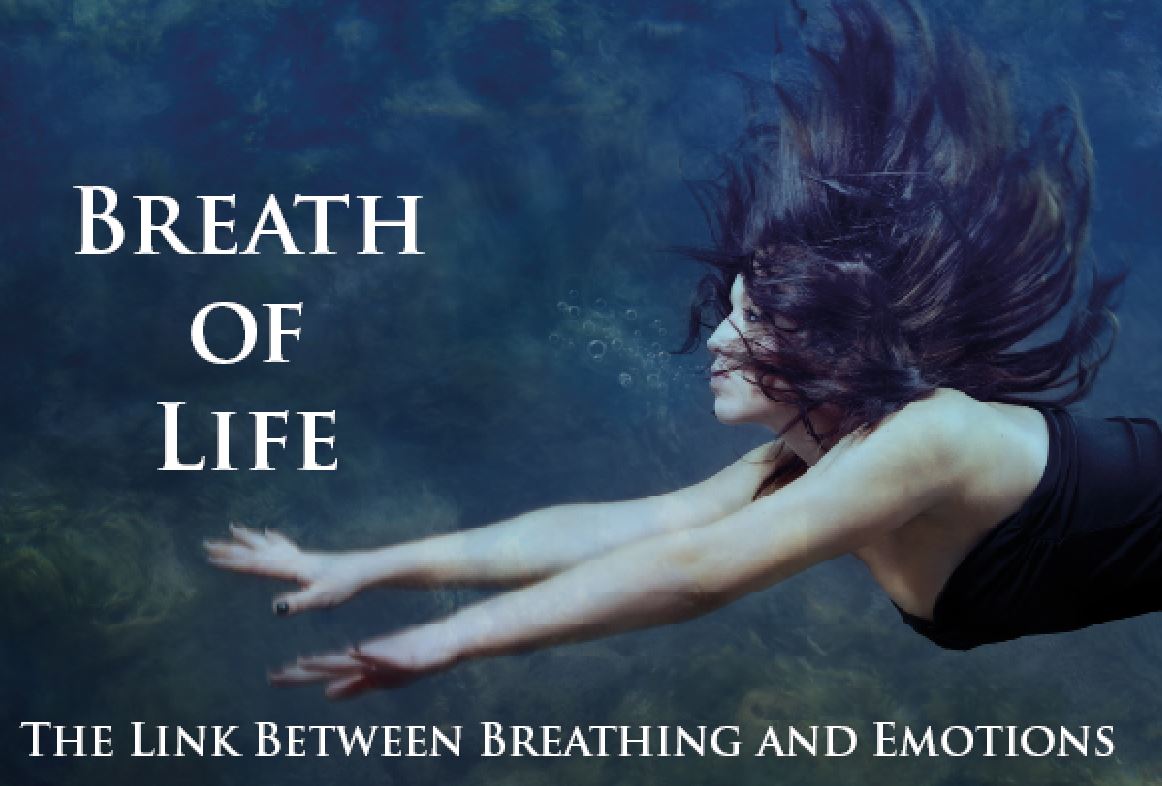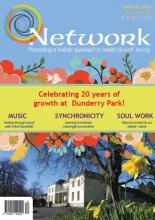Breath of Life - the link between breathing and emotions

Emotions add flavor to life. Emotions like joy, passion, love or contentment enrich our days, while anger and fear act as warning signals telling us when to be wary, when to protect ourselves. Emotions can be our guides when crucial decisions have to be made and most of all, emotions are the glue that binds us to family and friends.
But those same emotions can, at times, feel so intense it seems as if they’re tearing us apart. Emotions can be powerful drivers of our behavior and one of the most common reasons people seek therapy is because they feel bad emotionally. This usually means they feel sad, angry, lonely, fearful, depressed, or frustrated much of the time. For this reason every health care professional from consultants to acupuncturists to Reiki practitioners have to deal with emotions in the course of their professional practice.
From psychologist William James in the 1880’s to today, scientists have tried to work out what causes us to experience emotions. Because emotions are felt in the body and have obvious physiological components—shaking, crying, a racing heartbeat—James believed the physiological phenomenon gave rise to the emotions. We don’t cry because we feel sad, we feel sad because we cry. Over the decades since James, scientists have put forward a range of theories: emotions are caused by physical responses to events, or by the way we interpret those physical responses, or by interpreting the events themselves through the prism of our past experience, or by the body’s release of hormones, or by all of the above.
Cognitive Behavioural therapy has taken this body of theory further. Cognitive therapy links our emotions to our thought processes. If, for example, I think people are out to get me, I may feel anxious and fearful. If I think everyone loves me, I am likely to feel joyful or happy. From this perspective emotions are almost like symptoms generated by our thoughts. Cognitive therapists, therefore, focus on thought control and the reframing of attitudes and beliefs. But a joint study carried out by staff from the University of Quebec and the University of Louvain have added another component into the mix: Breathing.
The study, entitled Respiratory Feedback in the Generation of Emotion, involved two groups of volunteers. Group 1 was asked to produce four emotions (joy, anger, fear and sadness) through the use of memory, fantasy and by modifying their breathing pattern. For each of the emotions under examination, scientists monitored and analyzed the various breathing components—speed, location in the lungs, amplitude--and used their findings to draw up a list of breathing instructions. These instructions were then given to a second group of volunteers who had been told only that they were participating in a study of the cardio-vascular impact of breathing styles. Members of Group 2 were asked to breathe according to the instructions drawn up from the earlier experiment. At the end of the 45 minute breathing session, participants completed a questionnaire designed to elicit a range of information including details of their emotional responses. The results were unmistakable. To varying but significant degrees, the four breathing patterns induced the anticipated emotional responses.
This study contains important information for anyone engaged in the quest to better manage their emotional life. When caught up in the intensity of an emotion, particularly the so called “negative” emotions - anger, sadness, fear and its low-lying cousin anxiety - it is difficult to observe one’s own breathing pattern. But to a detached observer the patterns are obvious. When we’re sad we sigh frequently. When angry, we breathe rapidly and in the grip of fear our breathing is shallow and from the top of the lungs.
My experience as a therapist tells me that the source of our emotions can be complex. In addition to the physical components, emotions are frequently linked to old memories and unconscious beliefs and attitudes. Plumbing these depths alone can be daunting. But the element of our emotional responses that we can easily manage by ourselves is breathing.
The instructions given by researchers during this study were simple. To elicit joy, “Breathe and exhale slowly and deeply through the nose; your breathing is very regular and your ribcage relaxed.” Deep, slow breathing into the belly is strong medicine for anxiety, fear and anger. In the midst of strong emotion, the breathing of joy can loosen the grip of anger, fear or despair. Deep belly breathing sooths frayed nerves and stills a racing mind. It can be utilized to great effect in times of stress. But the real key to managing our emotional states through breathwork is regular practice. We need to practice breathing techniques like the breathing of joy, not just when we’re in the grip of strong feeling, but daily, as a routine, much like brushing our teeth.
For therapists and health professionals the study has significant clinical implications. Depending on our profession, our primary focus may be the body, or the energy systems of the meridians, or the psychological make-up of the person who has come to us for therapy or treatment. Regardless of our primary focus, if we practice a holistic model of health care, we take into account the full range of factors that influence health and well-being: biology, emotional states, life style, spirituality and economic and social conditions. While it may be difficult, if not impossible, for a therapist or health care professional to influence the complete range of factors that contribute to ill health and unhappiness, all health care workers have the ability to notice their clients breathing patterns.
Breathing patterns can be used as a diagnostic tool although this needs to be used carefully. If, for example, a client presents with a persistent physical problem, but also displays a greater than usual level of sighing, the health care professional might address the client’s sadness at a level appropriate to their own scope of practice. Some therapists have the skills and training to work directly with emotional issues. Others do not. But most health care practitioners, regardless of their therapy, can take a few minutes to work with their client/patient on developing calming breathing patterns.
For many clients, the therapeutic setting, a non-judgmental listener, or the gentle touch of a caring hand elicits strong emotion, emotion that needs to be addressed there and then. Some health care professionals will respond by referring the client to another, more appropriately qualified therapist. But in the moment slow, rhythmic belly breathing is an invaluable tool for any therapist who needs to help their client manage strong feelings during a therapy or treatment session.
Breathwork therapies, therapies that use the breath as the primary modality, have always worked at the confluence of breathing and emotions. This study provides objective, scientific verification of the principles behind such therapies as Rebirthing, Holotropic Breathwork, Radiance Breathwork and more. In breathwork, breathing itself gives access not only to emotions, but to the often complex network of memories and belief systems that underpin those feelings.
Most breathwork therapies utilise some form of connected breathing. This means that breathers focus their awareness on their breathing and at the same time eliminate the natural pauses in the cycle of inhale and exhale. This practice leads to a state of expanded awareness. The thought processes, belief systems and sometimes memories that give rise to emotional states, come to the surface. At this point, this proven key component in emotionality - breathing- provides the vehicle for revealing and dealing with the cause of those emotions. Breathing doesn’t just generate feelings, it is one of the most effective techniques available to us for resolving emotional distress.
Catherine Dowling is the author of Rebirthing and Breathwork: A Powerful Technique for Personal Transformation, as well as a range of articles on breathwork therapy published in The Healing Breath: A Journal of Breathwork, Psychology and Spirituality.
She ran a private practice in breathwork therapy in Dublin for almost twenty years and is a former president of the International Breathwork Foundation. She now lives in California.
Latest Issue
Upcoming Events
-
17/04/2020 to 26/04/2020
-
18/04/2020
-
23/04/2020
-
15/05/2020 to 23/05/2020
-
16/05/2020 to 17/05/2020
Recent Articles
Article Archive
- November 2011 (2)
- January 2012 (3)
- February 2012 (2)
- March 2012 (2)
- April 2012 (4)
- May 2012 (4)
- June 2012 (1)
- July 2012 (3)
- August 2012 (2)
- October 2012 (2)

